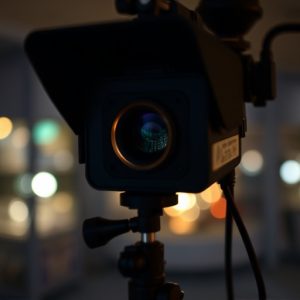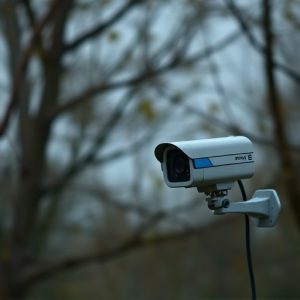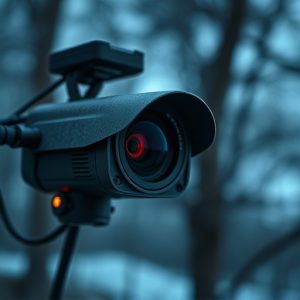Unmasking Hidden Threats: RF Detection for Front Door Cameras
Concealed cameras integrated into everyday objects offer discreet yet powerful security solutions fo…….
Concealed cameras integrated into everyday objects offer discreet yet powerful security solutions for front doors, providing homeowners with remote access via smartphone apps. RF detectors uncover hidden cameras by detecting electromagnetic radiation, ensuring enhanced privacy and security. To detect concealed cameras on front doors, charge and calibrate an RF detector, test it on non-emitting devices, scan the area at arm's length, and focus on peak readings; further investigation may be needed with specialized equipment or professional help.
Uncover hidden threats with our comprehensive guide on detecting concealed cameras, focusing on those designed for front doors. In an era where privacy concerns are paramount, understanding how these tiny yet potent devices operate is vital. This tutorial delves into the world of radio frequency (RF) detection, a powerful tool to identify and mitigate hidden camera risks. By the end, you’ll be equipped with the knowledge to perform your own RF sweep, ensuring a safer home environment.
- Understanding Concealed Cameras: Types and Their Placement for Front Doors
- The Role of an RF Detector in Uncovering Hidden Cameras
- Step-by-Step Guide: How to Perform a Radio Frequency (RF) Sweep Using Your Detector
Understanding Concealed Cameras: Types and Their Placement for Front Doors
Concealed cameras, often hidden within everyday objects, are a common method for security monitoring, especially at front doors. These discreet devices come in various types, each designed to fit specific aesthetics and locations. For instance, fake rock cameras blend seamlessly into landscaping, while magnetic or sticky-backed models can be attached to door frames or walls. Some advanced units even offer remote access via smartphone apps, allowing homeowners to monitor their entrances from anywhere.
Placement is key when installing a concealed camera at a front door. Positioning it at eye level or slightly elevated provides optimal visibility without appearing obtrusive. Additionally, ensuring the camera has a clear view of the doorway and any approach paths encourages deterrence against potential intruders. With careful selection and strategic placement, these hidden cameras offer an effective layer of security for homes and businesses alike.
The Role of an RF Detector in Uncovering Hidden Cameras
An RF (Radio Frequency) detector is a powerful tool in the arsenal of professionals tasked with uncovering hidden cameras, especially those installed surreptitiously in homes or offices, like Concealed Cameras for Front Door. These devices operate by detecting electromagnetic radiation emitted by various electronic devices, including hidden cameras that often use wireless signals to transmit footage. By sweeping the detector across a space, it can identify the presence and location of such cameras, even those not readily visible or connected to power sources.
The RF detector’s ability to penetrate walls and other obstacles makes it invaluable in identifying covert surveillance equipment. It functions by analyzing frequency bands that many hidden cameras operate on, allowing users to pinpoint devices that might be recording activities without the knowledge of occupants. This is particularly crucial for maintaining privacy and security in domestic settings where even a single Concealed Camera for Front Door could pose significant risks.
Step-by-Step Guide: How to Perform a Radio Frequency (RF) Sweep Using Your Detector
Performing a radio frequency (RF) detector sweep is an effective method to uncover hidden cameras, especially in areas like front doors. Here’s a step-by-step guide to help you detect concealed cameras using your RF detector:
1. Prepare Your Equipment: Ensure your RF detector is fully charged and calibrated. Test it on known non-emitting devices to confirm its functionality. For optimal results with hidden cameras, consider using an RF detector designed for detecting wireless signals, as many modern hidden cameras operate wirelessly.
2. Scan the Area: Hold the detector at arm’s length from the front door or area you suspect might contain a hidden camera. Move it slowly and methodically across the surface of the door or wall, maintaining a consistent distance. The detector will begin to beep or display an alert when it detects RF signals, indicating potential hidden cameras or other devices transmitting on these frequencies.
3. Identify Peak Readings: Pay close attention to areas where the detector emits the loudest beeps or shows the highest signal strength readings. These peaks could indicate the location of a hidden camera’s transmitter. Focus your inspection on these specific spots, using tools like a mirror or a second detector for more precise targeting.
4. Investigate Further: If you suspect a device is detected, further investigation is required. You may need to use specialized equipment or consult professionals to confirm and deactive the hidden camera safely.
In conclusion, understanding the types and placement of concealed cameras, especially those targeted at front doors, is the first step in enhancing home security. The RF detector plays a pivotal role in uncovering these hidden devices, offering a simple yet effective method to ensure privacy. By following the step-by-step guide provided, homeowners can now proactively protect their personal spaces from potential surveillance with just a radio frequency sweep.


